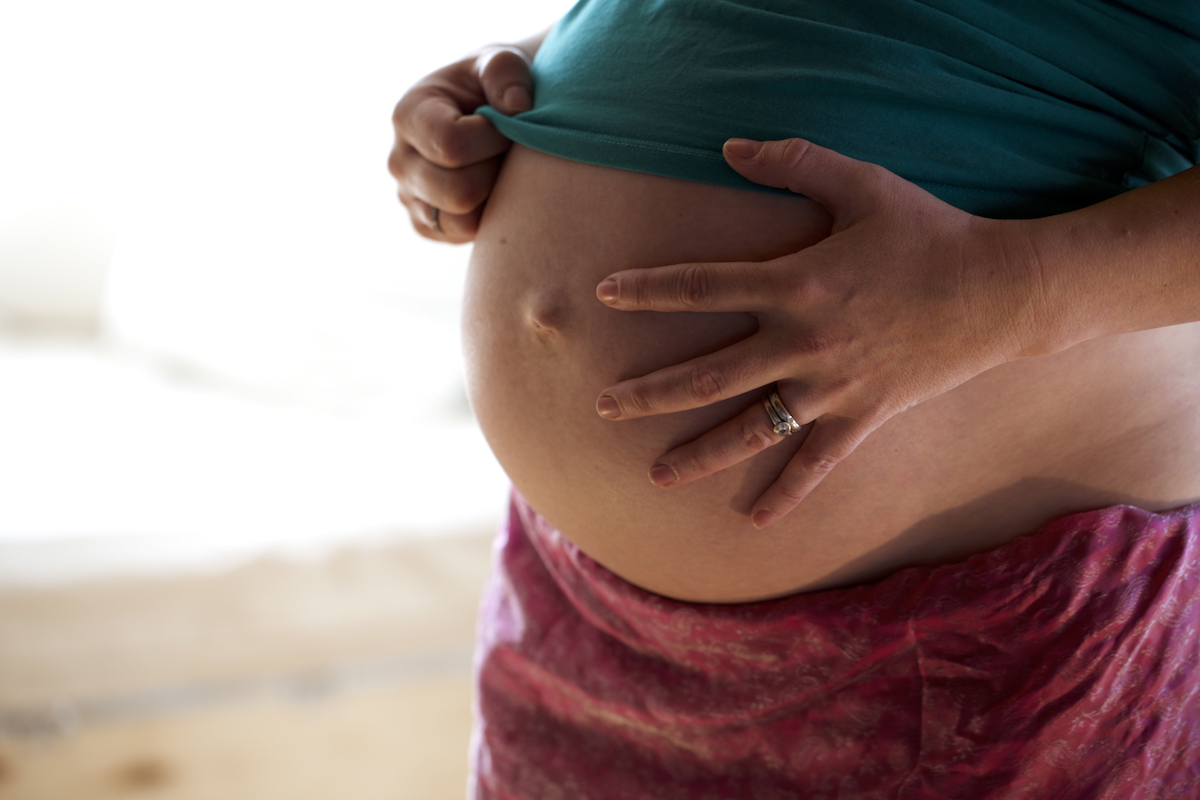Contents:
Medical Video: Removal of Uterus from Woman..!! Hysterectomy..!!
The placenta (baby's placenta) usually attaches to the uterine wall during pregnancy and will release spontaneously after giving birth. But in certain cases, the placenta can attach too deep to the uterine wall so that it does not go away. The placenta that does not break away during labor can place pregnant women at risk of severe vaginal bleeding, which is sometimes lethal. This complication of pregnancy is called placenta accreta.
What is placenta accreta?
One in 533 pregnancies in the world is predicted to experience placenta accreta. Thus the findings of a study by the University of Chicago in 2005. Placenta accreta was included in the group of conditions "retained placenta" aka retentio placenta. Placenta accreta is a condition in which the placenta does not escape from the uterus within one hour after the birth of the baby. The placenta is not only attached to the uterine wall, but the placental tissue can actually grow deeper into the uterine wall.
If you are known to have placenta accreta in your current pregnancy, you have a high chance of having it again in your next pregnancy, according to the Mayo Clinic.
What causes placenta accreta?
It is not known exactly what causes placenta accreta. Doctors think that this condition is related to deviations in the uterine lining and high levels of alpha-fetoprotein, a protein produced by babies that can be detected in the mother's blood. This deviation can occur due to scarring after a cesarean section or uterine surgery. This scar allows the placenta to grow embedded too deep into the uterine wall. In some cases, there is no definite cause for this condition.
What are the signs and symptoms of placenta accreta?
Women with placenta accreta usually do not show any signs or symptoms during pregnancy.
But in some cases, this condition causes vaginal bleeding during the third trimester (weeks 27 to 40). Contact your doctor immediately if you experience vaginal bleeding during your third trimester. If you experience severe bleeding, such as bleeding that soaks the pads in less than 45 minutes, or is heavy and accompanied by abdominal pain, you should call 119.
Who is at risk for experiencing placenta accreta?
Having a history of uterine cesarean delivery (eg removal of uterine fibroids) is known to increase the risk of placenta accreta for future pregnancies. The more cesarean births a woman has, the greater the risk. The American Pregnancy Association estimates that women who have more than one cesarean have an increased risk of around 60 percent.
Several other factors are also expected to increase a woman's risk of developing this condition, including:
- Placenta previa, a condition that causes the maternal placenta to cover part or all of the cervix (cervix). Placenta accreta is diagnosed in 5-10 percent of pregnant women who experience placenta previa
- The placenta is located in the lower part of the uterus
- Pregnant over 35 years old
- Uterine abnormalities, such as scar tissue or uterine fibroids
This condition can occur in women without a history of uterine surgery or placenta previa.
What are the complications of placenta accreta?
The placenta that does not want to escape from the uterus is considered a potentially life-threatening pregnancy complication. A woman with placenta accreta can experience severe vaginal bleeding which makes her lose an average of 3 to 5 liters of blood during childbirth. In comparison, the average adult has around 4.5 to 5.5 liters of blood in their body. Up to 90 percent of women with placenta accreta need to undergo a blood transfusion during childbirth due to this vaginal bleeding.
Sometimes the doctor will keep the placenta intact in your body, because the tissue can dissolve over time. But doing so can lead to serious complications that may include severe uterine infections that require removal of the uterus, until clots of blood clots in the lungs or pulmonary embolism.
About 7 percent of women with this condition die during labor. Maternal mortality can even occur when patients and doctors work together to take all necessary precautions.
How do doctors diagnose placenta accreta?
Sometimes this condition is found by doctors during childbirth. But in many cases, women are diagnosed during pregnancy. Your doctor usually runs several tests to make sure the placenta does not grow into the uterine wall if you have several risk factors for placenta accreta. Some common tests to check this condition include imaging tests, such as ultrasound (USG) or magnetic resonance imaging (MRI) and blood tests to check high alpha-fetoprotein levels.
If placenta accreta is diagnosed and treated properly, women usually experience full recovery without lasting complications.
How do doctors treat placenta accreta?
If your doctor has diagnosed you with this condition, they will make a plan to make sure your baby is born safely.
Severe cases are treated with surgery. First, the doctor will do a cesarean section to give birth to your baby. Next, the doctor may remove your uterus (hysterectomy). This is to prevent serious blood loss that can occur if some, or all, of the placenta is left attached to the uterus after your baby gives birth. Once the uterus is removed, you no longer have the chance to get pregnant in the future.
ACOG noted that for women who do not want to remove the uterus because they still want to try to become pregnant in the future, it is important for doctors to deal with pregnancy risks as early as possible. The end result of this condition is unpredictable, and there is an increased risk of serious complications during future pregnancies. These risks include miscarriage, premature birth, problems with blood clots (disseminated intravascular coagulopathy), lung failure or adult respiratory distress syndrome, kidney failure, and premature birth.
Discuss all your treatment options with your doctor. They will help you choose treatments based on your personal condition.
What is the impact of placenta accreta for babies?
Bleeding during the third trimester may be a warning sign of placenta accreta, and if this occurs it will usually be followed up with preterm labor. Premature labor and subsequent complications are the main problems of the baby. The risk in infants during cesarean delivery is rare and includes surgical injuries or respiratory problems.
Can placenta accreta be prevented?
There is no way to prevent placenta accreta. Your doctor will monitor your pregnancy carefully to prevent complications if you are diagnosed with this condition. Your team of doctors will monitor your health condition and use drugs, bedrest, and whatever is needed to help continue pregnancy until you are old enough.












